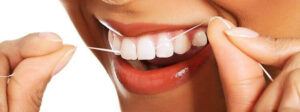It is very natural and basic tendency of any substance to wear away over time. So is the case with your teeth too. It gradually darkens with age, and there are several other factors that play their roles in yellowing it. This situation can be devastating, as it may impact your smile too. There are some home remedies that can help you retain your white teeth at its best health and natural color. Let’s have a short preview of these teeth whitening home remedies!

Citrus Fruit as Bleaching Agent
Citrus fruits, like pineapple, lemon, oranges, works as bleaching agent to the teeth and also contributes to the oral cavity to produce extra saliva that helps in cleaning and whitening the teeth. Specifically lemons are highly beneficial to teeth whitening. If you can rinse a couple of times per week using half water and half lemons juice, it would act just great for your teeth. But do not overdo it as by washing with this concoction more than twice a week may be detrimental to your tooth enamel.
Include Milk, Yogurt, and Cheese in Your Diet
Milk products are high in lactic acid that cuts down periodontal disease and regulates the growth of preservation of teeth. Apart from preserving and catapulting the teeth enamel, hard mild products like cheddar is more effective for whitening and scrubbing the teeth compared to soft milk products.
Use Baking Soda to Bleach teeth at Home
It has been recommended by most of the health professionals that baking soda is one of the most effective, strong and least risky whitening agent as it neutralizes the acid and eliminates stains from the teeth enamel. It not only whitens your teeth but also cleans them. Just add a pinch of baking soda, a few drops of drinking water and a little bit of salt to make a mixture best for teeth whitening. You can scrub your teeth using this mixture to retain the health and whitening shine of your teeth.
Hydrogen Peroxide
This is quite popular and effective whitening ingredient. This chemical helps ward off the development of microorganisms, eliminates bacterial infections and also reduces bad breath that is the resultant of microorganisms. It is also used in manufacturing toothpastes, mouthwashes and disinfectants. It is ideal for teeth whitening and is approved by the FDA. It is effective in wearing down stain by degrading their molecules. It is used by professional cosmetic dentists for whitening teeth, in a more powerful manner. Beware never digest hydrogen peroxide.
Among the various solutions available in the market, you must consult your dentist before using any of them as certain teeth whitening products or kit contains excessive amount of hydrogen peroxide which may cause issues like tooth sensitivity.
Lemon Juice and Baking Soda Great Mixture for Teeth Whitening
This has been used for long as the best and the simplest home remedy for cleaning and whitening your teeth. The chemical reaction of baking soda with the fresh lemon juice brings a fresh and brightening result. Any of these categories of chemical is effective and when fused in a group can display improved impact. You should brush your teeth using this chemistry once a week not more and you can witness the wonderful results. Excessive use of such chemical composition can erode the enamel of your tooth so don’t be greedy.
Brush and Floss are the best Home Remedy
Prohibiting your teeth from wearing stains, call for constant and regular cleaning and brushing of your teeth. Warding off the process of staining is better than removing the stains. So to follow this thumb rule you should brush and also floss everyday your teeth at least twice a day to keep stains at bay. It has been proved that flossing is more crucial than brushing to retain the overall health of the teeth..
Eat Fibrous and Crunchy Foods
Crunchy foods allow you eliminate a lot of glucose and chemical components that become the cause of cavity and stains. These types of food clean between the teeth and remove any sandwitched food. Crunchy foods behave like nature’s toothbrush.
Rinse Mouth with Water Post Eating
The simplest and best idea to avoid stain on your teeth is to immediately rinse your mouth when you are done with eating. Every time, when you eat, make it a habit to rinse your mouth with plain water to drain out any obstructed food particles and avoid any microorganism to develop acid that is the cause to many disorders.
Orange Peel and Bay Leaves for Bleaching your Teeth
The fusion of orange skin and bay leaves can become yet another most effective teeth whitening powder that can be used for bleaching your teeth at home. Dry out the orange peel and the bay leaves. Turn these to powder mixing well and you are done with a great power that can naturally brighten up your teeth offering you white pearly smile.
Tooth Whitening Kits
In the market you can get a home tooth whitening kit that comprises of carbamide peroxide or hydrogen peroxide, a whitening agent, which can eliminate the stains quickly and can also modify your genuine tooth color. If you have got your discolored teeth due to coffee, a tooth bleaching kit is the best remedy. With a few kits, you can use a peroxide powered gel using a tiny toothbrush to the outer surfaces of the teeth. In many other kits, you will get the teeth whitening gel is in a separate holder that should be molded to the teeth. This tray is used every day for thirty to fifty minutes to get the best results and white teeth for nearly a couple of days.
As said before, we strongly recommend taking help from your dentist before trying any of the kit or whitening gel.
A healthy and pearly fresh smiling face is certainly a great possession for anyone! Following a healthy diet will definitely will go a long way in offering security to your teeth keeping their color natural for a longer period of time. However, relying on a natural teeth whitening home remedy is always best and ideal for you to opt in to boost the health and shine of your teeth. But it is advisable to consult your dentist before deploying any kind of dental treatment to be on the safe side.



